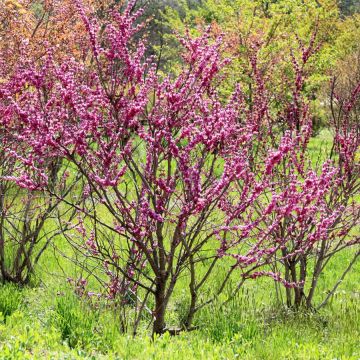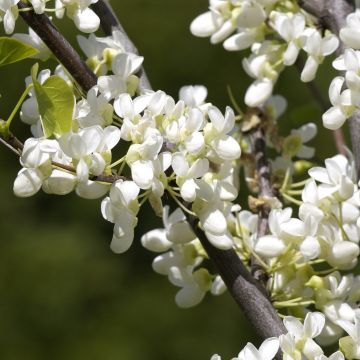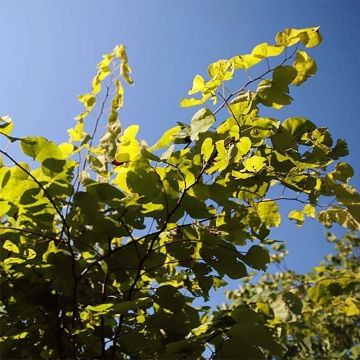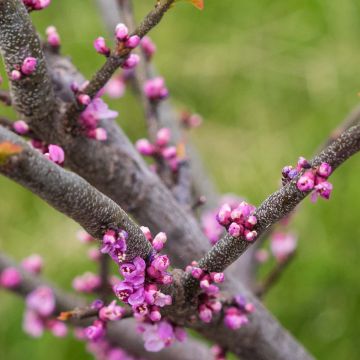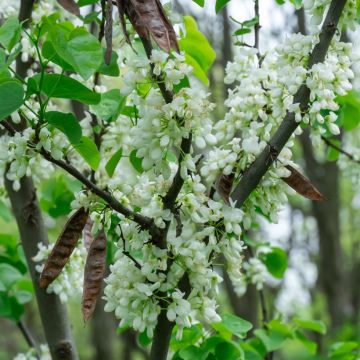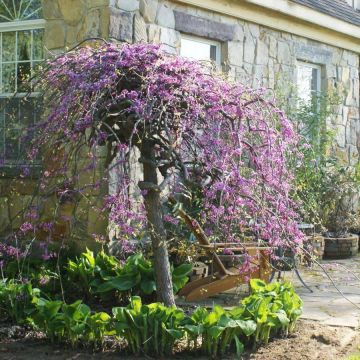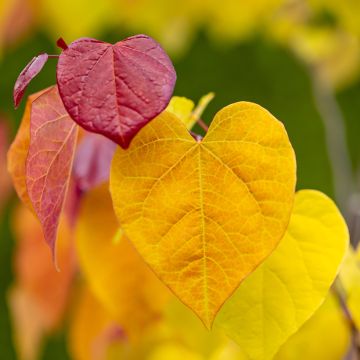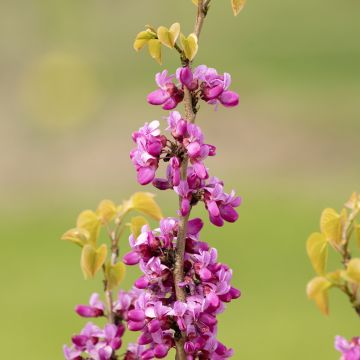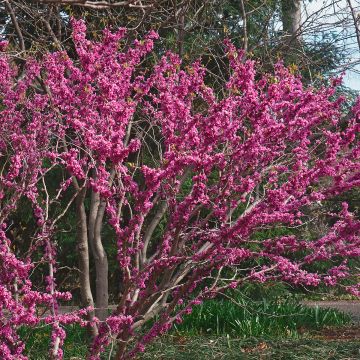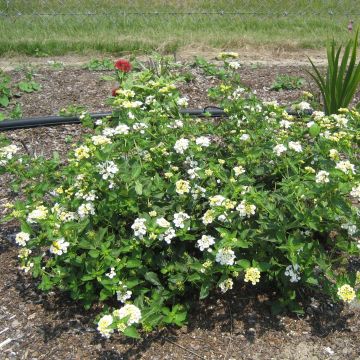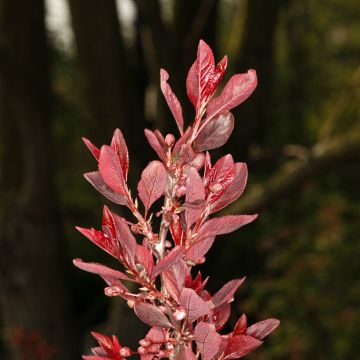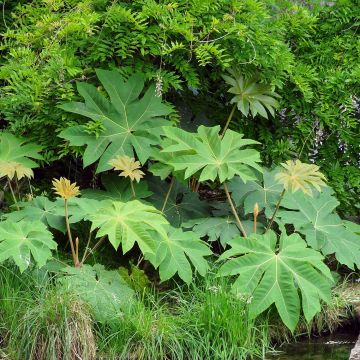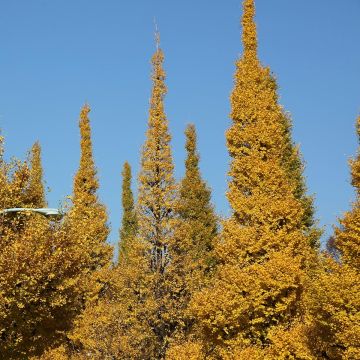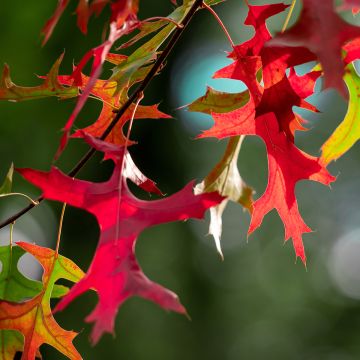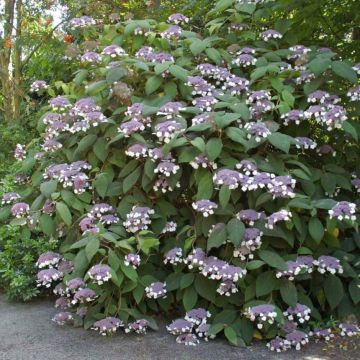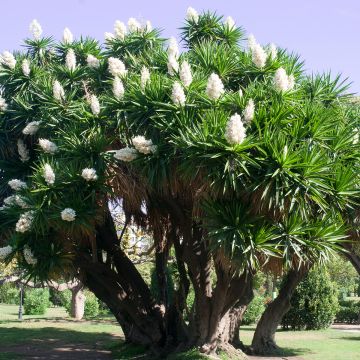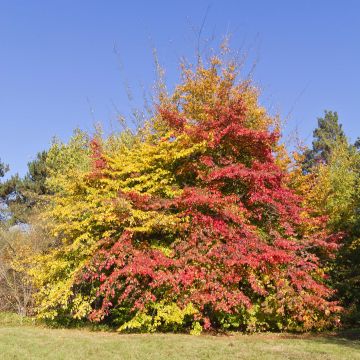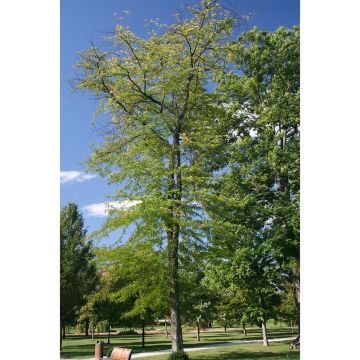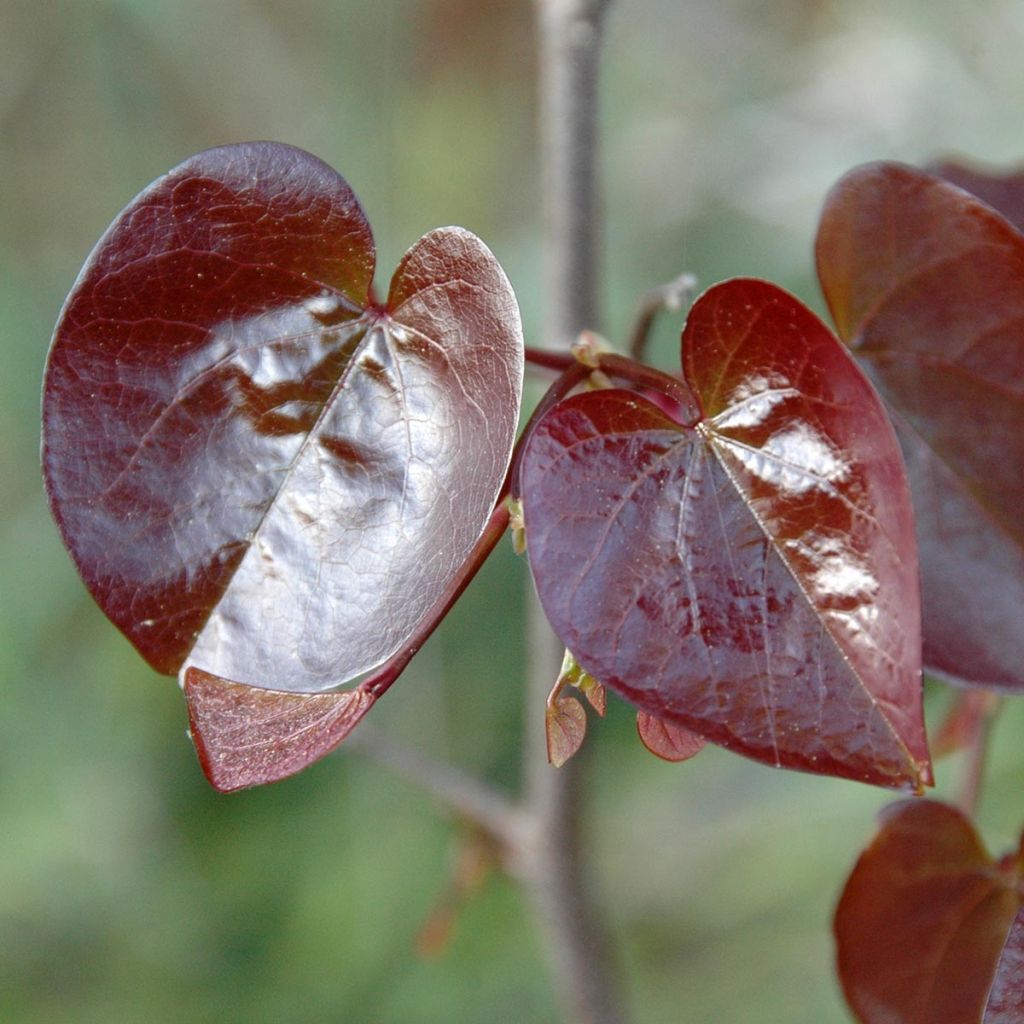

Cercis canadensis var.texensis Merlot - Eastern Redbud
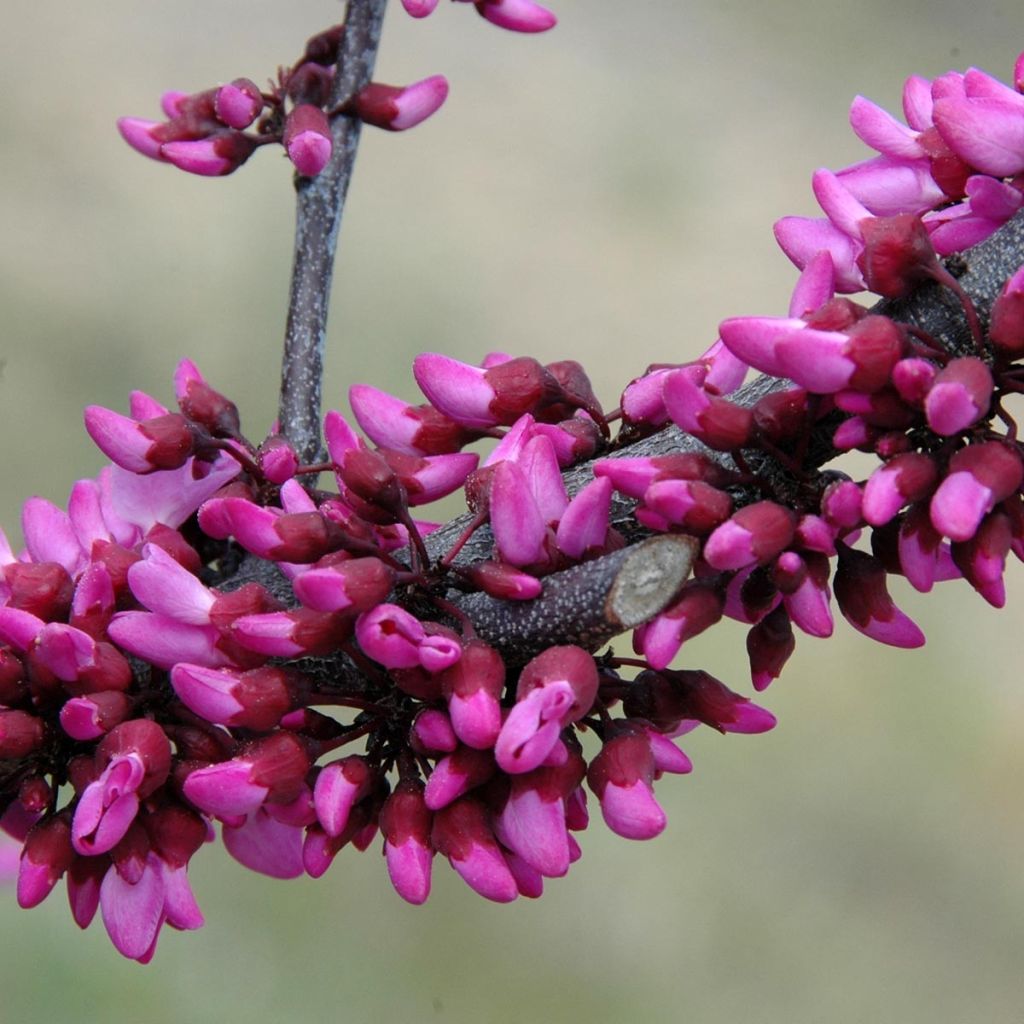

Cercis canadensis var.texensis Merlot - Eastern Redbud
Cercis canadensis var.texensis Merlot - Eastern Redbud
Cercis canadensis var.texensis Merlot
Texas Redbud, Texas Eastern Redbud
This item cannot be shipped to the selected country
Delivery charge from €5.90
Delivery to Corse prohibited
More information
Schedule delivery date,
and select date in basket
This plant carries a 24 months recovery warranty
More information
We guarantee the quality of our plants for a full growing cycle, and will replace at our expense any plant that fails to recover under normal climatic and planting conditions.
From €5.90 for pickup delivery and €6.90 for home delivery
Express home delivery from €8.90.
Delivery to Corse prohibited: UE law prohibits the import of this plant from mainland France to Corse as part of the fight against Xylella fastidiosa. Please accept our sincere apologies.
More information
Does this plant fit my garden?
Set up your Plantfit profile →
Description
The Cercis canadensis 'Merlot' is a recent variety of Canadian Redbud, also known as Judas Tree, notable for its purple foliage that lasts for 8 months. As for its pink flowering, this is the star of the show: its pink-purple butterfly-shape flowers appear on the trunk and bare branches. Then, they give way to heart-shaped leaves, reddish-purple in early spring, which evolve to purple-red and dark green before falling. It is hardy down to -25°C (-13 °F) and its drought resistance makes it an easy tree to grow and cultivate for gardeners. The purple Judas tree will be particularly highlighted when planted alone or in the background of a flower bed.
The Cercis canadensis belongs to the Fabaceae family, with the species originating from Canada. This small tree or bush, with a bushy habit and branching vegetation from the base, reaches a height of 2m (6 ft 7 in) and a width of 1m (3 ft 4 in), with normal growth. The flowers appear before the leaves, usually in April, directly on the branches, even those located at the base of the bush. In this Merlot cultivar, they are in the shape of a pink-purple pea flower. The deciduous foliage emerges reddish-purple, then turns into a bright purple-red, and finally becomes dark green in autumn. The leaves are heart-shaped and measure 8 to 10 cm (3.1 to 3.9 in) in length. The fruits, in autumn, have a pod-like shape and are also striking.
The Cercis canadensis 'Merlot' tolerates all types of soils as long as it benefits from good drainage. It prefers sunny positions, but also accepts a semi-shaded location sheltered from cold winds. Its drought tolerance, once established, makes it an ideal shrub for dry gardens. Similarly, its great hardiness allows it to withstand temperatures as low as -25°C (-13 °F). Its habit is naturally bushy, but it is possible to prune it from the start to train it on a stem, giving it a more spreading habit.
The Canadian Redbud will display all its splendour when planted alone on a lawn or placed in the background of a flower bed alongside other bushes. For a striking effect, associate it with a medium sized summer-flowering clematis to brighten up its purple foliage, such as the delicate white frills of the Clematis Maria Skłodowska Curie.
Report an error about the product description
Cercis canadensis var.texensis Merlot - Eastern Redbud in pictures
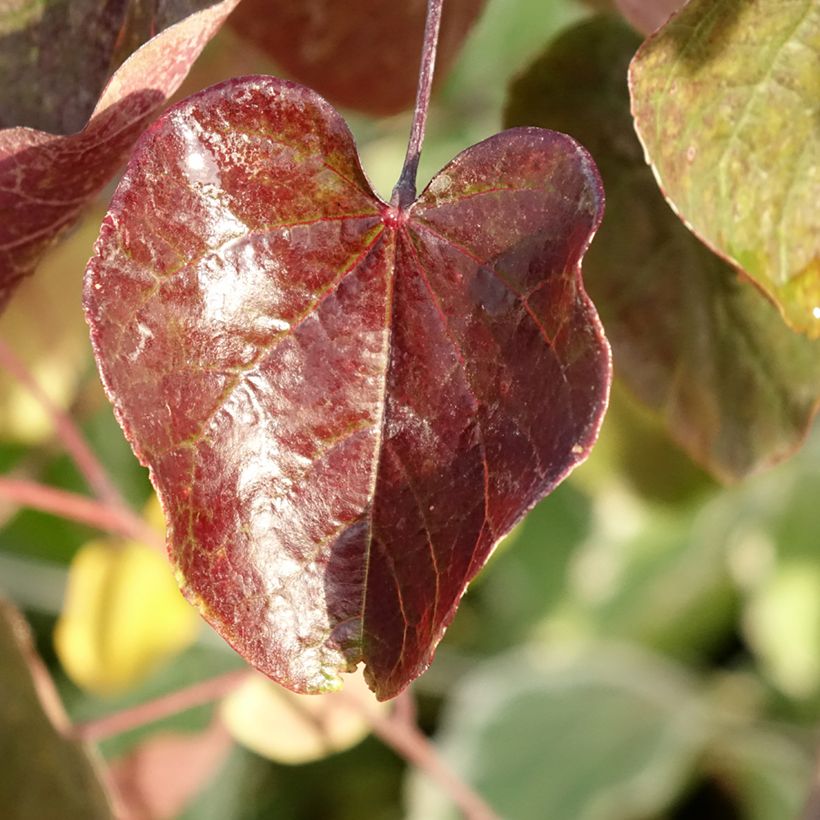

Plant habit
Flowering
Foliage
Botanical data
Cercis
canadensis var.texensis
Merlot
Fabaceae
Texas Redbud, Texas Eastern Redbud
Cultivar or hybrid
Other Cercis
Planting and care
Cercis canadensis 'Merlot' should be planted in early spring or early autumn, in full sun or partial shade. It is not very demanding regarding the nature of the soil, as long as it is somewhat deep. Very chalky soils are not a problem, nor is summer drought once it is well established. However, this redbud tree is sensitive to heavy and consistently wet soils. In poor soil, enrich the planting soil with good compost or potting soil. Water it regularly to help it establish, as well as during the first two summers in case of prolonged drought. It can tolerate all types of soil but prefers neutral or alkaline soils. It is hardy, but young shoots may suffer from severe frost in early spring. Protection with horticulture fleece can be useful during the first few years in case of a severe cold spell in March.
Planting period
Intended location
Care
This item has not been reviewed yet - be the first to leave a review about it.
Striking foliage shrubs
Haven't found what you were looking for?
Hardiness is the lowest winter temperature a plant can endure without suffering serious damage or even dying. However, hardiness is affected by location (a sheltered area, such as a patio), protection (winter cover) and soil type (hardiness is improved by well-drained soil).

Photo Sharing Terms & Conditions
In order to encourage gardeners to interact and share their experiences, Promesse de fleurs offers various media enabling content to be uploaded onto its Site - in particular via the ‘Photo sharing’ module.
The User agrees to refrain from:
- Posting any content that is illegal, prejudicial, insulting, racist, inciteful to hatred, revisionist, contrary to public decency, that infringes on privacy or on the privacy rights of third parties, in particular the publicity rights of persons and goods, intellectual property rights, or the right to privacy.
- Submitting content on behalf of a third party;
- Impersonate the identity of a third party and/or publish any personal information about a third party;
In general, the User undertakes to refrain from any unethical behaviour.
All Content (in particular text, comments, files, images, photos, videos, creative works, etc.), which may be subject to property or intellectual property rights, image or other private rights, shall remain the property of the User, subject to the limited rights granted by the terms of the licence granted by Promesse de fleurs as stated below. Users are at liberty to publish or not to publish such Content on the Site, notably via the ‘Photo Sharing’ facility, and accept that this Content shall be made public and freely accessible, notably on the Internet.
Users further acknowledge, undertake to have ,and guarantee that they hold all necessary rights and permissions to publish such material on the Site, in particular with regard to the legislation in force pertaining to any privacy, property, intellectual property, image, or contractual rights, or rights of any other nature. By publishing such Content on the Site, Users acknowledge accepting full liability as publishers of the Content within the meaning of the law, and grant Promesse de fleurs, free of charge, an inclusive, worldwide licence for the said Content for the entire duration of its publication, including all reproduction, representation, up/downloading, displaying, performing, transmission, and storage rights.
Users also grant permission for their name to be linked to the Content and accept that this link may not always be made available.
By engaging in posting material, Users consent to their Content becoming automatically accessible on the Internet, in particular on other sites and/or blogs and/or web pages of the Promesse de fleurs site, including in particular social pages and the Promesse de fleurs catalogue.
Users may secure the removal of entrusted content free of charge by issuing a simple request via our contact form.
The flowering period indicated on our website applies to countries and regions located in USDA zone 8 (France, the United Kingdom, Ireland, the Netherlands, etc.)
It will vary according to where you live:
- In zones 9 to 10 (Italy, Spain, Greece, etc.), flowering will occur about 2 to 4 weeks earlier.
- In zones 6 to 7 (Germany, Poland, Slovenia, and lower mountainous regions), flowering will be delayed by 2 to 3 weeks.
- In zone 5 (Central Europe, Scandinavia), blooming will be delayed by 3 to 5 weeks.
In temperate climates, pruning of spring-flowering shrubs (forsythia, spireas, etc.) should be done just after flowering.
Pruning of summer-flowering shrubs (Indian Lilac, Perovskia, etc.) can be done in winter or spring.
In cold regions as well as with frost-sensitive plants, avoid pruning too early when severe frosts may still occur.
The planting period indicated on our website applies to countries and regions located in USDA zone 8 (France, United Kingdom, Ireland, Netherlands).
It will vary according to where you live:
- In Mediterranean zones (Marseille, Madrid, Milan, etc.), autumn and winter are the best planting periods.
- In continental zones (Strasbourg, Munich, Vienna, etc.), delay planting by 2 to 3 weeks in spring and bring it forward by 2 to 4 weeks in autumn.
- In mountainous regions (the Alps, Pyrenees, Carpathians, etc.), it is best to plant in late spring (May-June) or late summer (August-September).
The harvesting period indicated on our website applies to countries and regions in USDA zone 8 (France, England, Ireland, the Netherlands).
In colder areas (Scandinavia, Poland, Austria...) fruit and vegetable harvests are likely to be delayed by 3-4 weeks.
In warmer areas (Italy, Spain, Greece, etc.), harvesting will probably take place earlier, depending on weather conditions.
The sowing periods indicated on our website apply to countries and regions within USDA Zone 8 (France, UK, Ireland, Netherlands).
In colder areas (Scandinavia, Poland, Austria...), delay any outdoor sowing by 3-4 weeks, or sow under glass.
In warmer climes (Italy, Spain, Greece, etc.), bring outdoor sowing forward by a few weeks.

































